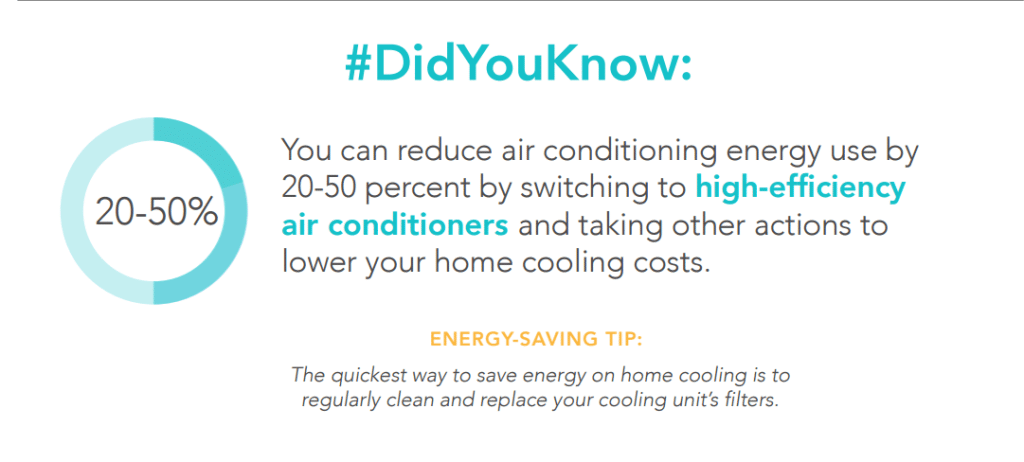An easy way to think of SEER ratings is to think of them in terms of MPG for vehicles. We all want our vehicles to have high MPG so we can buy less gas. Well, we want higher SEER ratings so our air conditioners are using less energy to run.
SEER Seasonal Energy Efficiency Ratio is the amount of cooling produced divided by the amount of electricity used.
US government SEER standards:
- In the United States, residential air conditioning systems made after 2005 must have a SEER rating 13.00 at a minimum.
- The Environmental Protection Agency set a minimum SEER rating 14.50 to qualify for ENERGY STAR®.
- As of January 1, 2015, the Department of Energy required split system central air conditioners in southeastern states to have a minimum SEER rating 14.00.
A higher SEER rating can mean energy cost savings. Well maintained units with higher SEER ratings use less energy. Cost savings will vary based on the temperature the thermostat is set to, the amount of time the unit is off, how often the filter is changed, the amount of insulation in the home, and how well the system is maintained by a professional technician.
Let’s go back to our vehicle analogy. When you purchase a vehicle with higher MPG, you spend less money on gasoline, but ultimately the savings will vary based on how each person drives their vehicle and whether or not they maintain it. The same goes for your air conditioning and heating system.
If you are in the market for a new air conditioning system, give us a call. Our Comfort Advisors will design a system tailored for your home and your specific needs.
*Infographic provided by the U.S. Department of Energy

